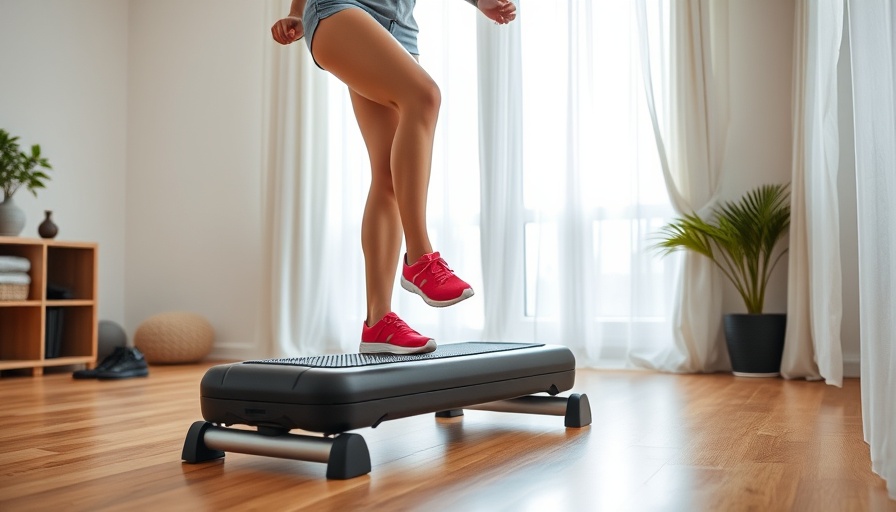
Desk Stretches: A Vital Component of Workplace Wellness
In today’s fast-paced environment, many of us spend long hours sitting at our desks, engrossed in projects and deadlines. This often results in physical discomfort and poor posture. As we delve into the topic of desk stretches and realignment exercises, it's crucial to highlight their significance in enhancing our overall well-being, especially for those members of the SDA faith community who may be juggling work and spiritual commitments. These quick exercises not only relieve aches but also reinforce a sense of mindfulness and physical health.
In 'Desk Stretches and Realignment Exercises: Relieve Aches and Improve Posture from Your Chair', the video highlights essential exercises that address the physical strains of desk work, prompting us to analyze their benefits for both physical and spiritual health.
Understanding the Need for Desk Stretches
Desk stretches are more than just a method to relieve tension; they represent a proactive approach to maintaining one’s physical health in a sedentary lifestyle. Particularly for office workers and students, incorporating these simple exercises can lead to significant improvements in posture, muscle tone, and even mental clarity. Using scientific insights, we can draw connections between body alignment and our spiritual well-being, emphasizing that maintaining physical health could enhance our focus during spiritual practices.
Unpacking the Routine: Key Stretches to Practice
The video titled 'Desk Stretches and Realignment Exercises' presents a series of eight exercises designed to be performed right at your desk. From chest openers to shoulder presses, these movements are tailored to target common areas of tension—shoulders, neck, and back. Erasing these physical strains paves the way for mental clarity, allowing individuals to fully engage with their work and spiritual life.
The Chest Opener: Gaining Perspective
One of the initial exercises highlighted is the chest opener, where participants interlace their fingers behind their heads and open their elbows wide. This action serves a dual purpose: it engages the upper back while also encouraging deeper breaths, simultaneously creating a space for reflection. In the context of the SDA community, where contemplation and interaction with faith are important, this stretch can serve as a physical reminder to pause and breathe, reconnecting both body and spirit.
Why Twists Can Transform Your Day
The twisting motion is not only about mobility; it symbolizes a broader connection to flexibility—both physically and mentally. Twists help enhance spine health, and as participants engage in this movement, they’re reminded to be adaptable and open to change—a principle that resonates deeply with teachings in the SDA faith.
Mind Over Matter: Reconnecting with Breath
Erica emphasizes the importance of breath in her exercises. By focusing on breath control while stretching, individuals practice mindfulness, grounding themselves in the present moment. This practice harkens to biblical principles emphasizing the importance of being present and can enrich one's connection to faith.
Strengthening the Back: A Foundation for Posture
Exercises such as backward shoulder rolls and shoulder presses specifically target back muscles, strengthening them and promoting better posture. Good posture allows individuals to face their tasks with confidence, which can translate into various facets of life, including spiritual pursuits. Strong backs, literally and metaphorically, support our ability to uplift others in our communities.
Future Predictions: The Evolution of Workplace Health
As we look ahead, the future of workplace wellness will likely see a greater emphasis on integrating well-being practices into daily routines. The rise of remote work calls for innovative strategies that acknowledge physical and mental demands. Consequently, desk stretches could evolve into essential components of professional culture, encouraging communal practices that unify health restoration activities across the SDA community and beyond.
Actionable Insights: Creating a Stretching Routine
If you're looking to introduce desk stretches into your workday, consider setting reminders for yourself. Just five minutes every hour could maintain your physical health and enhance your overall productivity. Sharing these routines within your faith community can foster camaraderie and collective wellness, allowing everyone to thrive spiritually and physically.
Common Misconceptions Addressed
Many believe that these stretches are only for those with existing pain or issues. However, as highlighted in the video, their preventative nature is just as valuable. Incorporating stretches regularly can avert the onset of discomfort and encourage a harmonious balance between work and faith responsibilities.
Ultimately, embracing these desk stretches transcends mere physical benefit; they cultivate a harmonious relationship between body and spirit. As members of the SDA community continue to navigate their duties and faith, prioritizing physical well-being can serve as a testament to their commitment to living a balanced life. Let this be a call to action for all to embrace stretching as a pathway to rejuvenation and reverence in both work and spiritual spaces.
 Add Row
Add Row  Add
Add 




Write A Comment